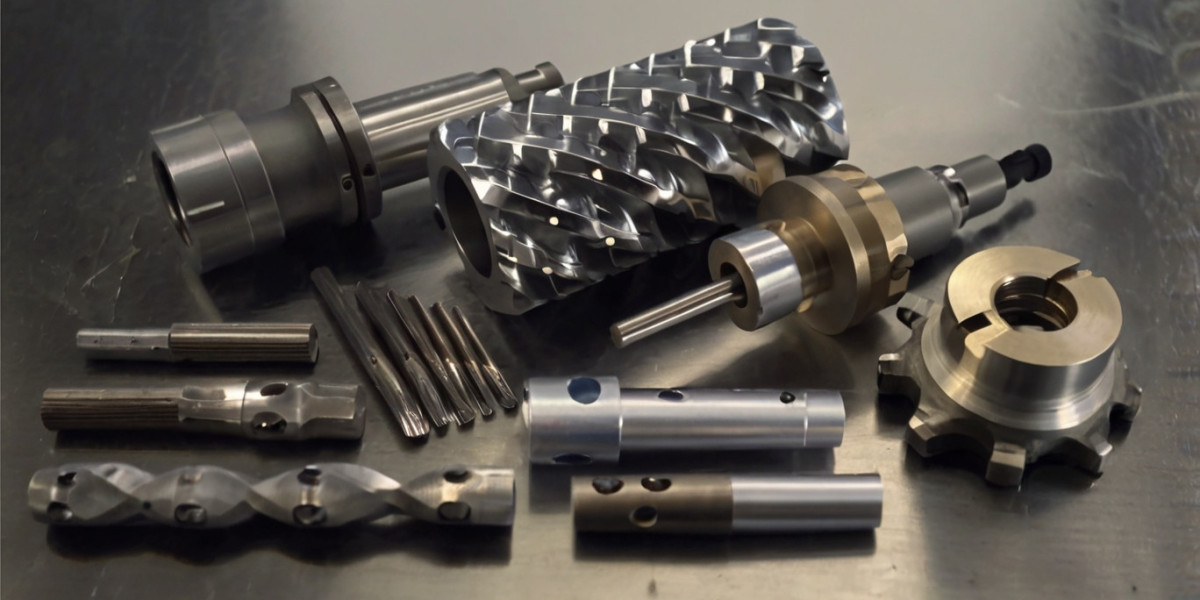CNC (Computer Numerical Control) cutting tools are essential in modern manufacturing. They come in various types, each suited for specific machining tasks. Understanding these tools' classifications and applications can enhance efficiency and precision in machining operations. In this article, I will provide a detailed overview of common CNC cutting tools, their classifications, and their typical uses, offering insights that may prove valuable for professionals in the field.
Basic Classification of Cutting Tools
Cutting tools can be categorized based on their machining methods and specific applications. The primary categories include turning tools, hole machining tools, milling cutters, broaches, threading tools, gear cutting tools, automatic line and CNC machine tools, and reamers.
Other classification criteria include:
Material: High-speed steel tools, carbide tools, ceramic tools, cubic boron nitride (CBN) tools, and diamond tools.
Structure: Solid tools, insert tools, machine-clamped tools, and composite tools.
Standardization: Standard tools and non-standard tools.
Overview of Common Tools
Turning Tools
Turning tools are among the most frequently used cutting tools in metal machining. They are suitable for machining external diameters, end faces, threads, and internal holes on a lathe. Turning tools can be categorized into solid turning tools, welded assembly turning tools, and mechanically clamped insert turning tools. Mechanically clamped turning tools offer stable cutting performance and eliminate the need for manual sharpening, making them increasingly popular in modern manufacturing.
Hole Machining Tools
Hole machining tools fall into two main categories:
Tools for creating holes in solid materials, such as twist drills, center drills, and deep hole drills.
Tools for reworking existing holes, including reamers, countersinks, and boring tools.
Milling Cutters
Milling cutters are versatile multi-edge rotary tools with a wide range of types. They are categorized by their application:
For machining flat surfaces, such as cylindrical face mills and end mills.
For creating grooves, including end mills, T-slot cutters, and angle mills.
For forming complex surfaces, such as convex and concave mills, and other specialized form cutters. Milling typically offers high productivity and results in a coarser surface finish.
Broaches
Broaches are multi-tooth tools designed for high precision and efficiency, often used in mass production. They can machine various internal and external surfaces. Broaches are classified into internal and external broaches based on the surface being machined. When using broaches, it is essential to select the correct tooth geometry and dimensions based on the material and size of the workpiece, including parameters such as:
Tooth Rake Angle (af): The difference in radius or height between adjacent teeth.
Tooth Pitch (p): The axial distance between adjacent teeth.
Threading Tools
Threads can be machined using either cutting or rolling methods.
Gear Cutting Tools
Gear cutting tools are used for machining gear teeth. They are classified based on their working principles into form gear cutting tools and generating gear cutting tools. Common form gear cutting tools include disc-shaped gear mills and pinion cutters; generating gear cutting tools include hob cutters, gear shapers, and gear shaving cutters. When selecting gear hob cutters and shaper cutters, consider the following:
The tool's basic parameters (module, pressure angle, tooth height coefficient) should match the gear being machined.
The tool's precision grade should be comparable to the required precision of the gear.
The tool's cutting direction should ideally match that of the gear being machined. For straight bevel gears, left-handed hobs are typically used.
Automatic Line and CNC Machine Tools
These tools are similar to conventional tools in terms of cutting components but are designed to meet the higher demands of CNC and automatic line machining. CNC tools are categorized into three main systems: turning tool systems, drilling tool systems, and milling and boring tool systems.
Common Specifications and Applications
Turning Tools
Common tip types for turning tools include:
Rough Turning Tools: Used for removing large amounts of excess material, bringing the workpiece diameter close to the desired size. Surface finish is not critical, and the tool tip can be sharpened to a pointed peak, though slight rounding is often preferred to prevent breakage.
Finish Turning Tools: Designed for achieving a very smooth surface on the workpiece, with a larger rounded nose compared to rough turning tools.
Round-Nose Turning Tools: Versatile for various workpiece types, capable of both right-hand and left-hand turning. Useful for turning brass and creating curved shoulder faces.
Cut-Off Tools: Used for cutting off material and turning grooves.
Threading Tools (Tap Tools): Used for threading screws or nuts, available in various profiles such as 60-degree, 55-degree V-type, 29-degree trapezoidal, and square thread taps.
Reaming Tools: For finishing drilled or cast holes to achieve precise dimensions or straight surfaces.
Side Turning Tools: Used for turning end faces of workpieces. Right-side tools are typically used for finishing the right end of a shaft, while left-side tools are used for finishing the left side of a shoulder.
Based on machining methods, cutting tool profiles are classified as:
Right-Hand Turning Tools: For turning the outer diameter from right to left.
Left-Hand Turning Tools: For turning the outer diameter from left to right.
Round-Nose Turning Tools: With a rounded cutting edge, suitable for both directions, ideal for corner or curved surface turning.
Right-Side Tools: For turning the right end face.
Left-Side Tools: For turning the left end face.
Cut-Off Tools: For cutting or grooving.
Internal Turning Tools: For machining internal holes.
External Threading Tools: For cutting external threads.
Internal Threading Tools: For cutting internal threads.
Understanding these tools and their applications is crucial for optimizing machining processes and achieving high-quality results.







